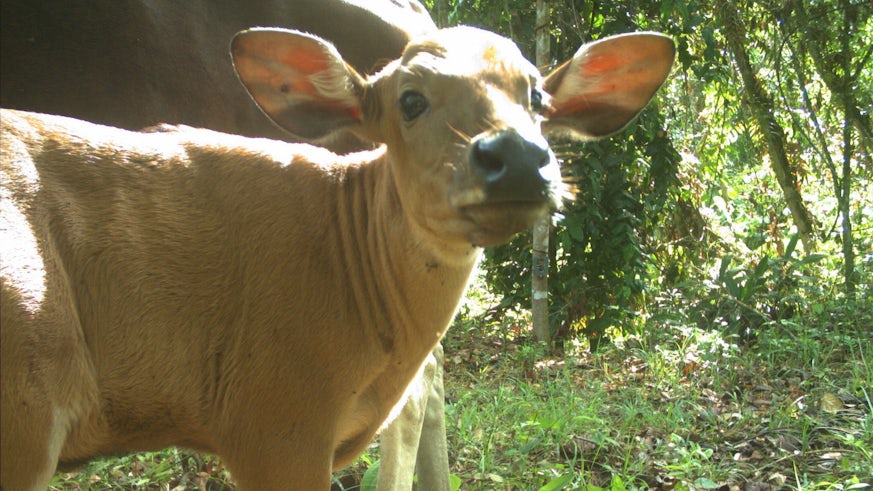The banteng: Sabah’s most endangered mammal under scrutiny
10 September 2019

The Bornean banteng, one of Sabah’s most endangered mammals, is dwindling to very low population densities, with fewer than 500 left in the wild. This is according to new research from Cardiff University and Danau Girang Field Centre.
By using natural marks, such as scars, to identify individual bantengs, researchers in Borneo have been able to build up a series of photographic captures of multiple individuals over an extended period. This in turn has allowed them to estimate the population density of this endangered wild cattle species across two forest areas.
“This is the first time that researchers have had sufficient quantities of data on this highly elusive species,” explained Dr Penny Gardner, a researcher at Danau Girang Field Centre.
“Herds are increasingly fragmented by deforestation, infrastructure and human activity, and this prevents their ability to move and maintain behaviours essential to their survival.”
As well as habitat loss, researchers also pinpointed poaching as a key factor in the reduction in banteng numbers.
“Poaching is widespread in all habitats containing bantengs, and several bantengs are shot every year in protected forests” said Dr Benoit Goossens, Professor at Cardiff University and Director of Danau Girang Field Centre.
“There is now an urgency to control poaching to prevent the loss of this species,” continued Dr Goossens. “We have recently been involved in securing a grant to increase the capacity of Sabah Forestry Department’s anti-poaching Protect Unit, which we hope will deter poachers and provide a fantastic boost to wildlife conservation in Sabah.”
The paper Using natural marks in a spatially explicit capture-recapture framework to estimate preliminary population density of cryptic endangered wild cattle in Borneo was published in Global Ecology and Conservation.

